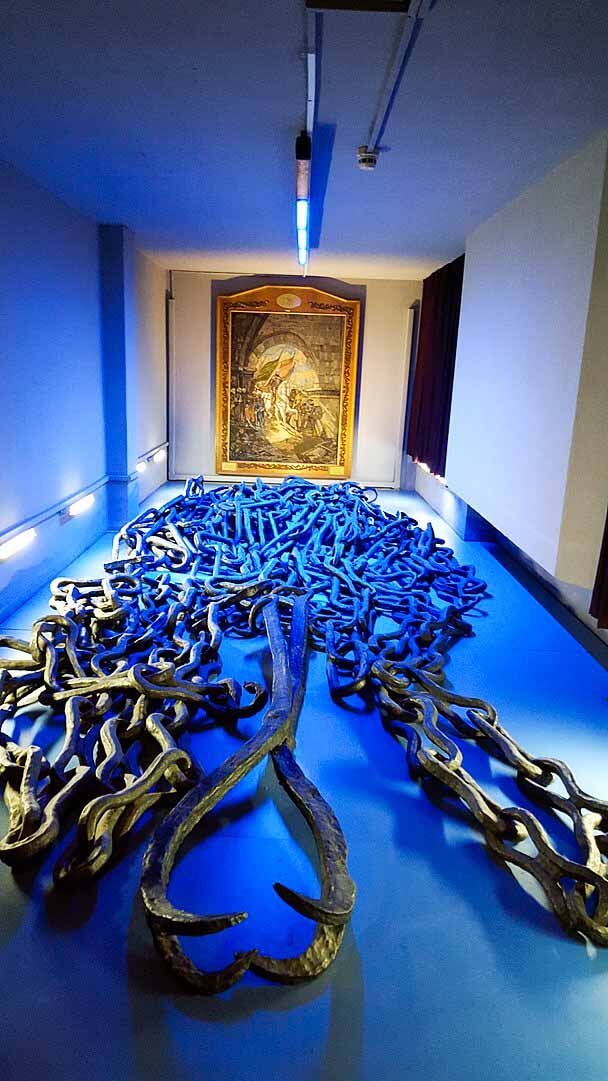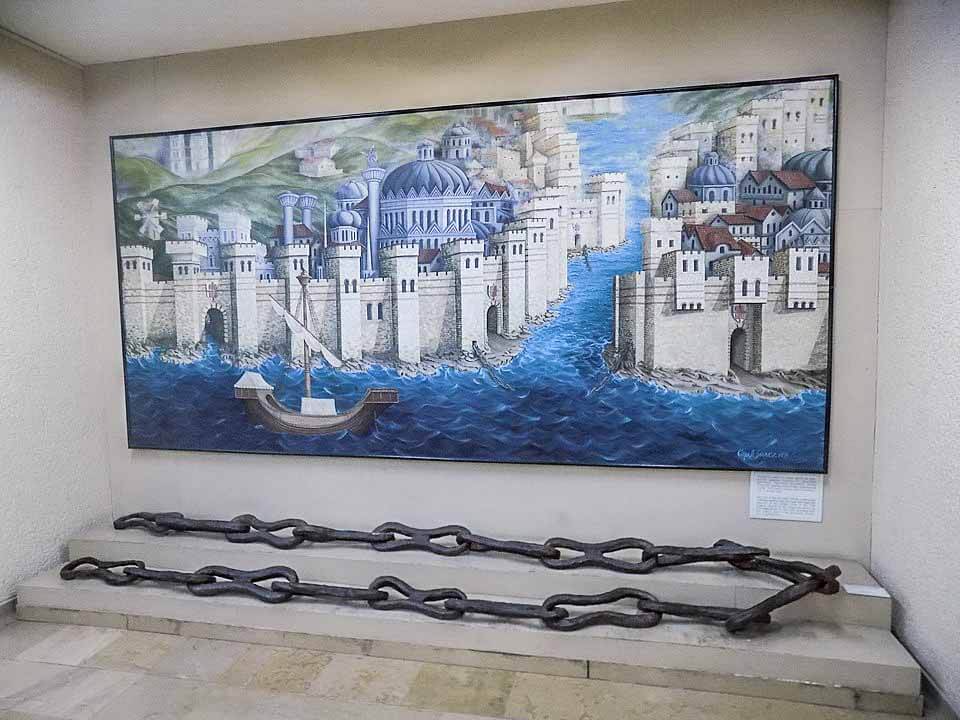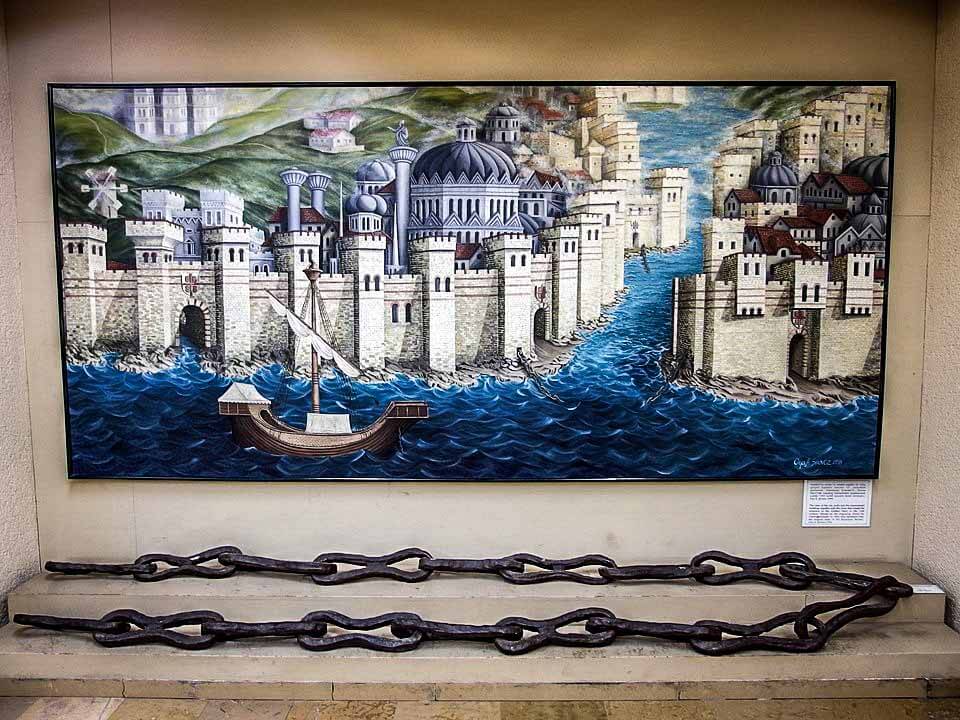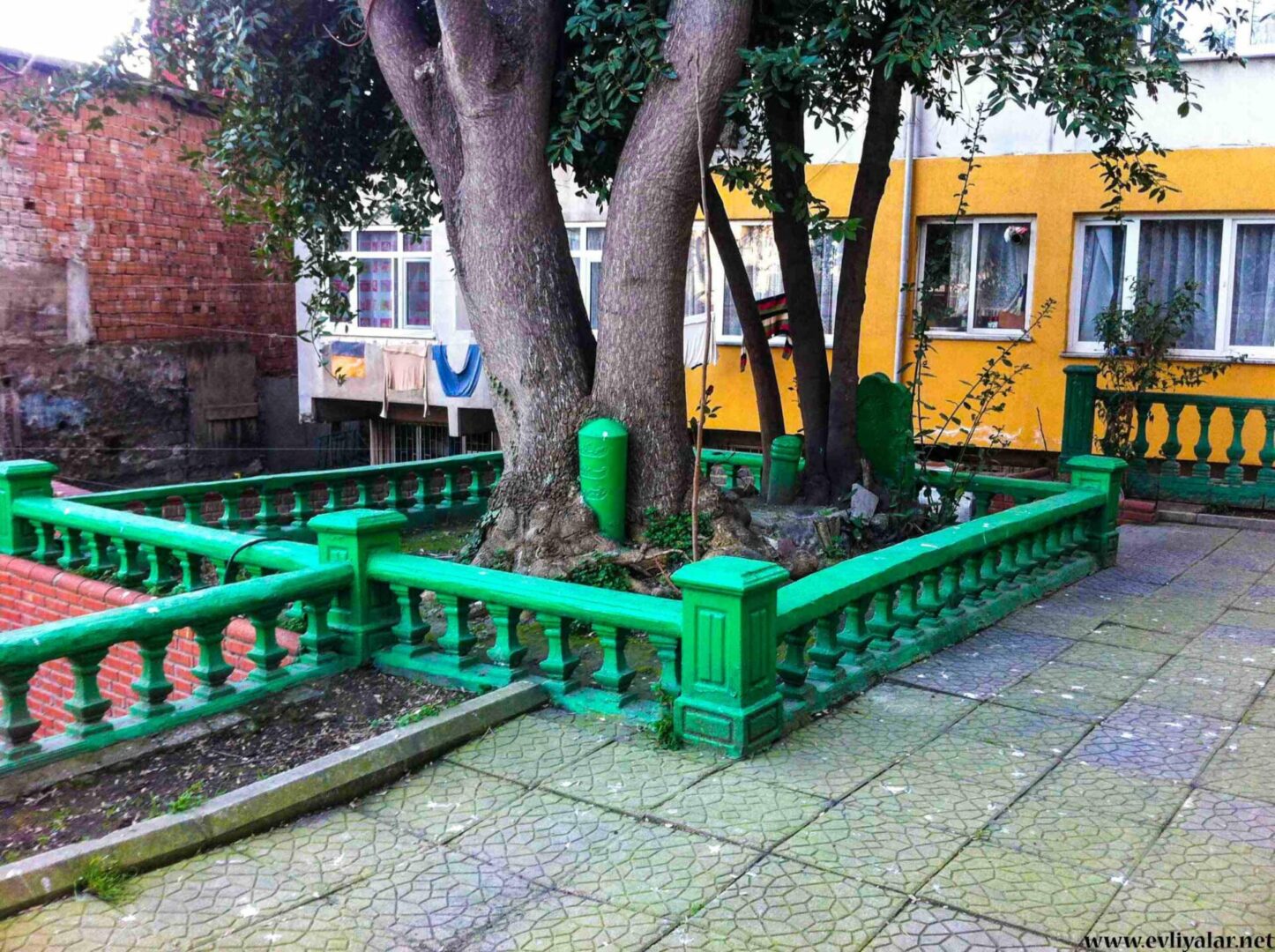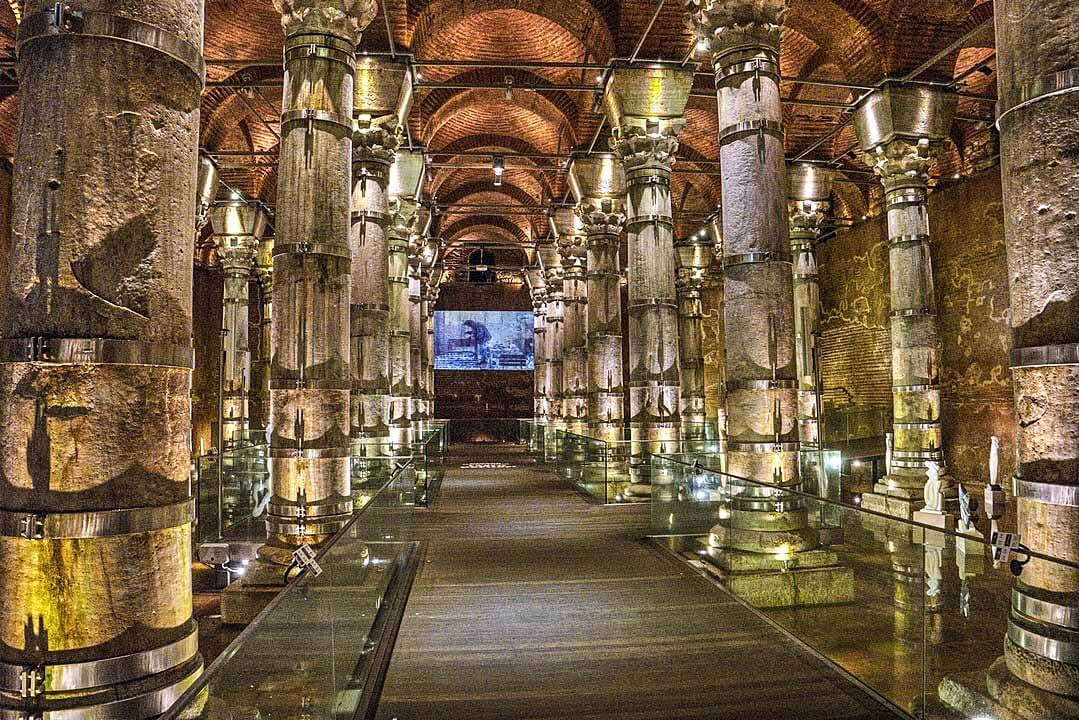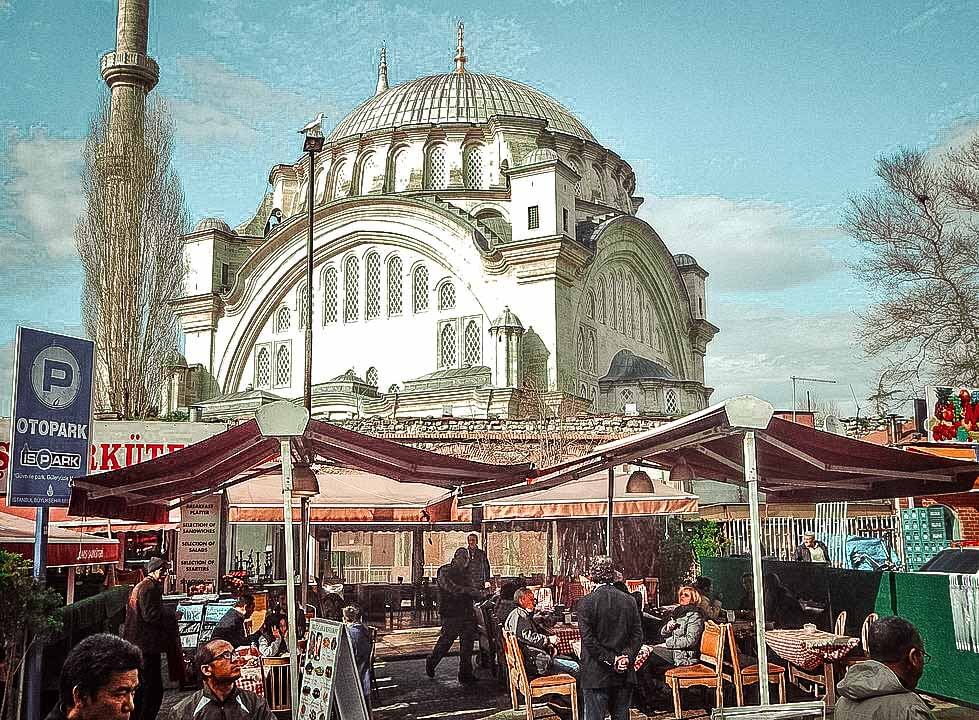Istanbul, Turkey
Coordinates: 41.0117, 28.9813
Two of the three remaining sides were relatively uninviting to an attacking force. Land walls protected all sides facing the water but an attack along the Sea of Marmara or the Bosphorus would have been particularly hazardous. It could not long be supported whereas the Golden Horn was a calm and narrow environment and its relatively unprotected northern shore, the suburb of Galata, would make a base from which, once secured, an attacker could continually mount attacks on the city itself.
To protect the city of Constantinople from naval attacks, two main security measures were put into place. The first and predictable measure was the construction of walls along the shoreline. The second security measure however, consisted of pulling a huge iron chain from Constantinople to the old Galata Tower, hence preventing unwelcome ships from entering the Golden Horn.
One section of the chain is now displayed in the Istanbul Archeological Museum.
There were three notable times when the chain across the Horn was either broken or circumvented. In the 10th century the Kievan Rus’ dragged their longships out of the Bosphorus, around Galata, and relaunched them in the Horn; the Byzantines defeated them with Greek fire. In 1204, during the Fourth Crusade, Venetian ships were able to break the chain with a ram. In 1453, Ottoman Sultan Mehmed II, having failed in his attempt to break the chain with brute force, instead used the same tactic as the Rus’; towing his ships across Galata over greased logs and into the estuary.
From the 7th century BC onwards the banks of the Golden Horn have attracted settlers, enabling Constantinople to become a rich and powerful port. After the Conquest of Constantinople in 1453, there was an even bigger influx of Greek, Jew and Italian merchants as well as other non-Muslims.


